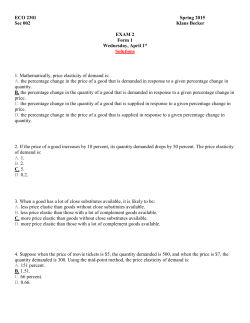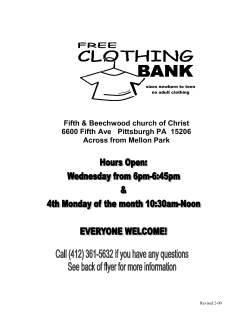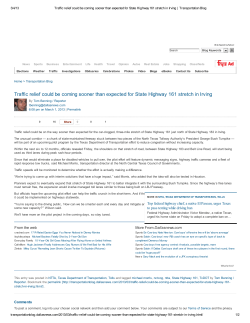
Sample Midterm 2 questions
Economics 1A, Fall 2012 Gregory Clark Sample Midterm 2 questions 1. In India cheap food is distributed by the government from special stores. Poor people have to wait in long lines to get this food. Will eliminating these stores hurt poor people (assuming full employment in the economy and that the poor all earn the same wage). A. B. C. D. E. Yes. Because the people who line up at the stores are only the poor. Yes. Because then the poor would have to pay market prices for their food. Yes. Because while the poor have to spend time waiting, time is not worth anything to poor people. No. Because the food in government stores tends to be of low quality. No. Because the poor will pay in time an amount equivalent to the lower food cost. 2. Which of the following taxes would cause a rent seeking loss? A. B. C. D. E. A tax of $0.20 per soft drink sold. A tax of $0.20 per newspaper. A tax of $100 per person alive on April 15. A tax of $1,000 per dog alive on April 15. None of the above. 3. Car pool lanes, where at peak periods only vehicles with 2-3 occupants may travel, are a popular solution for highway congestion. Is this an efficient solution to highway congestion? A. B. C. D. E. Yes. Yes. No. No. No. Because it increases average traffic speeds for everyone. Because the cars with more people in them get to go faster, reducing waiting times. Because they do not ensure that the $ value of usage of the highway is maximized. Because they can actually increase average waiting times by drivers. Because few people car pool as a result. 4. UC Davis offers subsidized housing to faculty, at half the market price. But if they leave this housing it must be sold back to the university at the same price. To get such a house faculty put their name on a waiting list, and must not own a house beforehand. Names are drawn at random from the wait list. Will this policy create rent seeking loss? A. No, because faculty are drawn at random. B. Yes, because of the provision that faculty on the wait list cannot own a house. C. No, because the house must be sold back to the university at the same price. D. Yes, because the house must be sold back to the university at the same price. E. Yes, because of both B and D. 5. In response to the gasoline shortage following Hurricane Sandy the governor of New Jersey has mandated no rise in gasoline prices, but rationing by the allowing only even and odd license plate numbers to get fuel on alternate days. Will this reduce the rent seeking activity induced by keeping the price below market clearing levels? A. B. C. D. E. Yes, because the demand on each day will be half as much. Yes, but not because it reduces gasoline demand. Yes, but only after the first day. No. If anything it is likely to increase demand for gasoline. No, it will definitely increase rent seeking losses significantly 6. Unemployment in the US has been at 8% of workers or more for four years. Over these last four years what has happened to average real wages (approximately)? A. B. C. D. E. Declined 25% Declined 15% Declined 5% Unchanged Increased by 5% 7. The US labor market is fairly competitive, since most workers are not represented by unions. Why then have most employers not imposed wage reductions in the last 4 years given a persistent excess supply of workers? A. B. C. D. Only unskilled workers are in excess supply. Labor laws prevent employers making wage cuts. Wage reductions will come only when current labor contracts come to an end. Since it is not possible to replace the entire current workforce, employers fear the effects imposing wage reductions will have on worker productivity. 8. Which of the following is a formula for the price elasticity of supply (P = price, Q = quantity, Y = income)? A. Q Q P P B. P P Q Q C. P Q Q P D. Q Y Y Q E. Y P Y P 9. The price elasticity of demand will typically be high where a good A. B. C. D. E. Is a small share of expenditure and is a complement to other goods. Is inferior. Is a small share of expenditure and is a substitute for other goods. Is a large share of expenditure and is a substitute for other goods. Is inferior and is a complement to other goods. 10. Suppose the income elasticity of demand for children is –0.2. That implies that children are A. B. C. D. E. An inferior good. A luxury A normal good. A Necessity Both an inferior good and a necessity 11. The graph above shows the ENGEL CURVE for TV watching. From its shape we can conclude that the income elasticity of demand Ey is such that A. Ey >1 B. Ey =1 C. 0< Ey <1 D. Ey = 0 E. Ey < 0 12. In modern America automobile consumption has an income elasticity of 2.5, but gasoline consumption has an income elasticity of only 0.5. This is mainly because A. B. C. The huge government investment in public transport has reduced driving to work. Fuel economy standards have improved very greatly. Time as a constraint on consumption affects driving more than the quality or number of vehicles purchased. Poor people share cars more than rich ones. Congestion on highways prevents people from driving as much as they want to. D. E. 13. Suppose the price elasticity of demand for housing is -1. That means a 1% rise in prices causes a 1% decline in consumption. But that seems to imply that if prices rose 200%, demand would decline by 200%, which is impossible. What does this seeming paradox illustrate? A. B. C. You cannot have a demand elasticity -1 or less. Demand elasticity for housing must be closer to 0. The elasticity of demand is a property of a point on the demand curve. Over large price changes it becomes a less and less good approximation. Though we will not observe it, demand can below 0. D. 14. 45 40 B1 Quantity of Food 35 B2 30 25 20 15 10 5 0 0 5 10 15 Quantity of Clothing 20 25 The figure above shows the initial budget constraint of a consumer (B1) and the budget constraint after a change in income or price (B2). What could have caused this change? A. B. C. D. E. A halving of income, with no change in prices. A doubling of income, with no change in prices. A halving of the prices of both food and clothing, with no change in income. A doubling of the prices of both food and clothing, with no change in income. Both B and C. 15. 25 B1 Quantity of Food 20 A I1 15 10 5 0 0 4 8 12 Quantity of Clothing The figure above shows the budget constraint of a consumer and one of their indifference curves. Is it possible that they would choose to consume the combination of food and clothing represented by point A? A. B. C. D. Yes, since it is on their Budget Constraint Yes, since it is on their Budget Constraint and on their Indifference Curve No, because there is a consumption choice that is on the Budget Constraint and on a higher in difference curve. Perhaps, depending on the shape of the other indifference curves. 16. The US Highway Department in designing highways assumes a human life is worth $6 million. Since almost no-one would be willing to sell their life for $6 million this implies A. B. C. D. E. We have not achieved an efficient level of safety on US highways. Safety should be greatly increased even if it costs a lot more. The Highway Department should value lives at $20 m. People in taking risks act as though their lives were worth $6 m, so the Highway Department should do the same. The efficiency criteria does not work when decisions involve losses of lives. People are being irrational when they refuse to sell their lives for $6 m.
© Copyright 2025





















